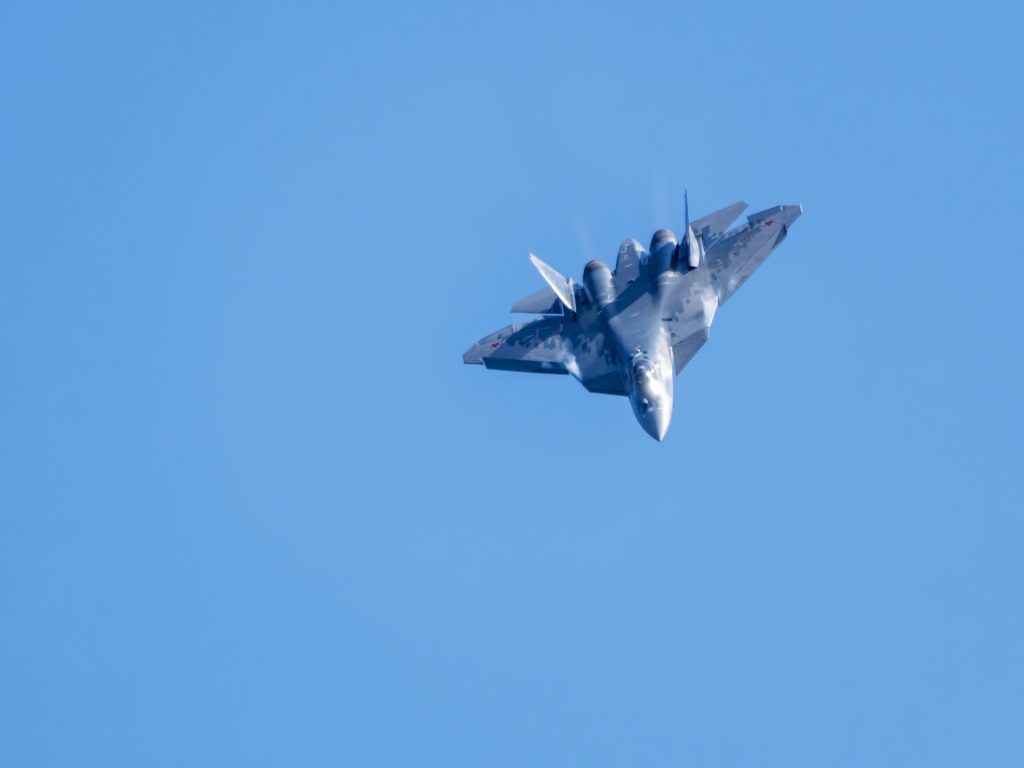The sanctions imposed by Western countries have disrupted supply chains.
Others are reading now
The future production of Russia’s Su-57 fifth-generation fighter jets may be at risk due to a shortage of critical Western microelectronics and specialized manufacturing equipment.
A Big Obstacle
These shortages, exacerbated by international sanctions, are putting a strain on Russia’s ability to maintain its advanced aircraft program, according to analysts from Frontelligence Insight and WP.
The Su-57, Russia’s most advanced fighter jet, was designed to rival the U.S. F-22 Raptor. However, leaked documents from Russian military electronics manufacturer Mikropribor, which supplies key components for the aircraft, indicate that the lack of several essential Western parts is becoming a major obstacle.
Among the missing components are MPPU-50 modules, critical to the Su-57’s production, as well as Siemens lathes (model KLE 360), WA36 suppressors, and power supplies EA-PS 3150 and PLR7 60-12.
Also read
A Priority to Hinder Russia’s Capabilities
Despite efforts to ramp up military production since the start of the war in Ukraine, Russia is struggling with securing these crucial parts.
The sanctions imposed by Western countries have disrupted supply chains, but Russian intermediaries have been reportedly smuggling or sourcing restricted components from countries like Kazakhstan and China to continue production.
While Russia has adapted its economy to a wartime footing and increased military production in 2023 and 2024, Western experts are concerned that Russia is finding ways to bypass sanctions.
Frontelligence Insight analysts have suggested that minimizing these supply routes should be a priority to further hinder Russia’s military capabilities.
The Su-57, capable of flying at speeds over 1,520 mph (2,450 km/h) and reaching altitudes of up to 65,600 feet (20,000 meters), is one of the most modern aircraft in Russia’s arsenal, recently appearing in the skies over Ukraine.


